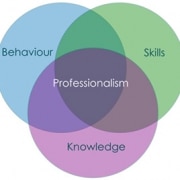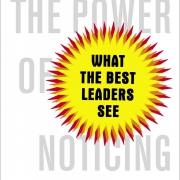What Management Model Best Stems the Spread of COVID-19?

After reaching pandemic proportions, the novel coronavirus is a perfect example of a high conduct-risk challenge. The rate at which COVID-19 will continue to spread will largely depend on how people manage the risk of contagion and whether they take a number of precautionary measures. Not only can adherence to certain sanitary steps, travel advisories, and quarantine requirements help contain the spread, but it can also reduce more lethal virus mutations in the future. While following safety norms and precautionary guidelines seems the most rational way to act at this point, it is not necessarily how people will most likely behave. As reported in recent news stories, even when exposed to elevated risk, people may selfishly ignore quarantine requirements. Moreover, while safety norms can be especially beneficial when the pandemic is more or less contained, it is precisely at such times that they may be overlooked.
The fact that people may miscalculate the risk of contagion for a variety of reasons strengthens the importance of business’ role in assisting in the containment of the pandemic. Organizations can help boost their employees’ compliance with a number of guidelines. That being said, it’s not clear what approach is best. For example, should companies amp employees’ focus on values (e.g., safety) or should they introduce new rules? And what framework should be put in place to ensure high cooperation without causing excessive fear?
The effectiveness of values vs. rules may depend on employees’ focus.
Although values may strengthen people’s spirit of cooperation and help guide decision-making in situations that cannot be easily predicted, they, too, suffer from self-serving interpretations and rationalizations. Compared to values, rules are rigid and inflexible and may come off as too prescriptive. Yet rules underscore the importance of compliance, which, in theory, befits the needs of a crisis such as that of COVID-19.
Indeed, whether companies use rules to manage the current situation instead of values may depend on the state of mind of employees and the organization’s own ethos and climate.
Research shows that when people hold a promotion focus, they tend to give more attention to opportunities and gains. This, in turn, makes them more likely to engage in risk-taking behavior. Conversely, when they hold a prevention focus, they give precedence to duty and responsibility, which is why they are more likely to engage in risk-averse conduct. Given the unique effects of these two types of orientations, it’s not surprising that whether employees hold one or the other may also affect their ability to comply with ethical principles and safety norms.
Not only does a promotion-focus increase the likelihood of rule-breaking behavior—rule-breaking behavior is most likely when people hold such a type of focus in an environment that also reinforces a promotion orientation, as is the case in a culture with a strong aspirational timbre. This is why organizations with employees who showcase a promotion-oriented state of mind and that wish to increase employees’ compliance with norms to help reduce the spread of COVID-19 should choose a rules-based approach. Rules, in this case, can help to correct people’s stronger-than-usual appetite for risk.
Calibrating values with a preventative frame and using implementation plans.
Imagine that just before the coronavirus crisis, ACME management introduced a new bonus plan: Employees can earn significant rewards provided they successfully meet their targets. The bonus plan is the type of situational factor that can trigger a promotion orientation, thereby making people more focused on gains and less sensitive to risk.
In the absence of any corrective measures, ACME’s employees may tend to give priority to business opportunities while discounting the importance of certain precautions. It’s possible that in deciding whether they should travel to certain destinations or not, employees might pay little attention to the latest information about the state of the pandemic in those areas. This biased thought process might become more widespread if, for example, ACME relied on communications that conveyed a type of message like, “In our organization, we aspire to and strive for high safety.” Though inherently constructive, the aspirational nature of this message would end up strengthening employees’ promotion focus.
Indeed, in this case, if ACME wished to bolster compliance with health safety measures and help reduce the coronavirus spread, it should actively foster a prevention orientation, as such a focus would help bring about a renewed sensitivity to risk. ACME could do this by aptly framing the right type of principles of conduct rather than by relying on overly constrictive rules.
For example, ACME could zero in on principles like Safety, Well-being, and Accuracy. Additionally, it could frame these principles in preventative terms by overtly assigning all ACME employees the responsibility to engage in behaviors that ensure safety, protect their own and others’ well-being, and avoid misinformation. Thanks to the emphasis placed on actions like “ensuring, protecting, and avoiding,” such an approach would help reinforce ownership at the individual level while priming a risk-averse orientation.
Finally, ACME could help employees manage high-risk situations by providing its workforce with agile rules framed as implementation plans. These plans would be if-then expressions that help employees internalize and automatize the type of responses that can reduce contagion risk. For example, one such rule might be, “If I travel to a red zone, then I’ll check my temperature every single day for the next 14 days.” Simple implementation plans, like the one described, help people routinize and execute preventative behaviors, thereby making more desirable outcomes more likely. As such, these plans can effectively increase self-regulation when managing health-related conduct risks.
While there is no doubt that organizations can strategically support governments to help control the coronavirus pandemic, companies must account for both internal and external circumstances. An organization-level approach to this highly dynamic area of risk should be flexible, smart, and entirely consistent with a savvy evaluation of current internal climate and culture factors. This approach must include pressures employees face at work, characteristics of the organization’s baseline compliance program, and the organization’s business operating model.
Caterina Bulgarella is a culture architect. She is the co-founder of Be Thread, a platform of tools for human-centric work environments, an SAI Global influencer, and an Ethical Systems lead contributor.
This article was originally published on FCPA blog, and is reprinted with permission.








